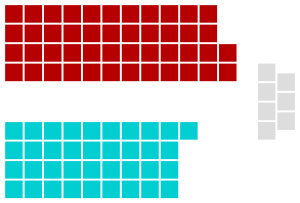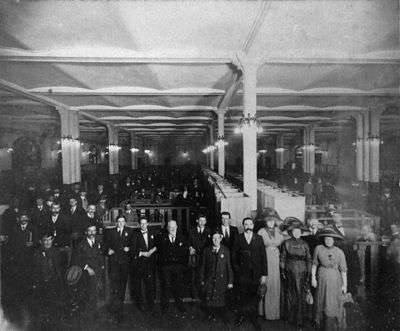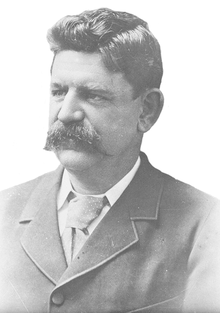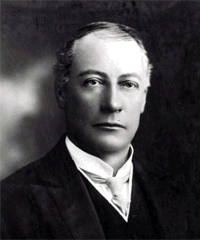1910 New South Wales state election
The 1910 New South Wales state election was held on 14 October 1910 for all of the 90 seats in the 22nd New South Wales Legislative Assembly and it was conducted in single-member constituencies with a second ballot if a majority was not achieved on the first. Both adult males and females were entitled to vote, but not Indigenous people. The 21st parliament of New South Wales was dissolved on 14 September 1910 by the Governor, Lord Chelmsford, on the advice of the Premier Charles Wade.
| |||||||||||||||||||||||||||||||
All 90 seats in the New South Wales Legislative Assembly 46 Assembly seats were needed for a majority | |||||||||||||||||||||||||||||||
|---|---|---|---|---|---|---|---|---|---|---|---|---|---|---|---|---|---|---|---|---|---|---|---|---|---|---|---|---|---|---|---|
| |||||||||||||||||||||||||||||||
 Legislative Assembly after the election | |||||||||||||||||||||||||||||||
| |||||||||||||||||||||||||||||||

This was the first NSW election using a second ballot system. All previous elections had used a first past the post voting system, where a candidate might be elected with less than 50% of the vote especially where two or more similar candidates split the vote.[lower-alpha 1]
The election saw the Labor Electoral League form government for the first time, winning 46 of the 90 seats in the Assembly.
Key dates
| Date | Event |
|---|---|
| 14 September 1910 | The Legislative Assembly was dissolved, and writs were issued by the Governor to proceed with an election.[1] |
| 23 September 1910 | Nominations for candidates for the election closed at noon. |
| 14 October 1910 | Polling day. |
| 15 November 1910 | Opening of 22nd Parliament. |
Results
|
New South Wales state election, 14 October 1910[1] | ||||||
|---|---|---|---|---|---|---|
| Enrolled voters | 867,695 | |||||
| Votes cast | 572,500 | Turnout | 69.05 | +2.33 | ||
| Informal votes | 10,514 | Informal | 1.80 | −1.07 | ||
| Summary of votes by party | ||||||
| Party | Primary votes | % | Swing | Seats | Change | |
| Labour | 280,056 | 48.92 | +15.61 | 46 | +14 | |
| Liberal Reform | 246,360 | 43.03 | −2.88 | 37 | −8 | |
| Independent Liberal | 33,529 | 5.86 | +0.15 | 6 | +2 | |
| Independent Labour | 4,527 | 0.79 | +0.79 | 0 | 0 | |
| Farmers and Settlers | 4,039 | 0.71 | +0.71 | 0 | 0 | |
| Independent | 3,989 | 0.70 | −9.45 | 1 | −3 | |
| Former Progressive | 0 | 0.00 | −4.75 | 0 | −5 | |
| Total | 572,500 | 90 | ||||
Changing seats
| Seats changing hands | |||||||||
|---|---|---|---|---|---|---|---|---|---|
| Seat | 1907 | Swing | 1910 | ||||||
| Party | Member | Margin | Margin | Member | Party | ||||
| Belmore | Former Progressive | Edward O'Sullivan [lower-alpha 2] | 19.7 | N/A | 0.7 | Patrick Minahan | Labor | ||
| Bingara | Liberal Reform | Samuel Moore | 11.9 | -12.2 | 0.3 | George McDonald | Labor | ||
| Darling Harbour | Independent | John Norton [lower-alpha 3] | -14.2 [lower-alpha 4] | N/A | 15.4 | John Cochran | Labor | ||
| The Glebe | Liberal Reform | James Hogue | 3.9 | -4.7 | 0.8 | Tom Keegan | Labor | ||
| Hastings and Macleay | Liberal Reform | Robert Davidson | -0.6 [lower-alpha 4] | -5.5 | 4.9 | Henry Morton | Independent | ||
| King | Liberal Reform | Ernest Broughton | 3.1 | -15.5 | 12.4 | James Morrish | Labor | ||
| The Macquarie | Liberal Reform | Charles Barton | 0.5 | -3.3 | 2.8 | Thomas Thrower | Labor | ||
| Marrickville | Liberal Reform | Richard McCoy [lower-alpha 5] | 14.6 | -16.8 | 2.2 | Thomas Crawford | Labor | ||
| Mudgee | Liberal Reform | Robert Jones | 3.7 | -7.0 | 3.3 | Bill Dunn | Labor | ||
| The Namoi | Independent Liberal | Albert Collins [lower-alpha 5] | 3.9 | N/A | 10.3 | George Black | Labor | ||
| Newcastle | Liberal Reform | Owen Gilbert | 7.4 | -12.3 | 4.9 | Arthur Gardiner | Labor | ||
| Paddington | Liberal Reform | Charles Oakes | 6.4 | -7.2 | 0.8 | John Osborne | Labor | ||
| Queanbeyan | Liberal Reform | Granville Ryrie [lower-alpha 6] | 5.7 | -6.7 | 1.0 | John Cusack | Labor | ||
| St Leonards | Independent | Edward Clark | -13.0 [lower-alpha 4] | N/A | 7.3 | Arthur Cocks | Liberal Reform | ||
| Surry Hills | Liberal Reform | Sir James Graham | -12.7 [lower-alpha 4] | N/A | 10.4 | Henry Hoyle | Labor | ||
| Members changing party | |||||||||
| Seat | 1907 | Swing | 1910 | ||||||
| Party | Member | Margin | Margin | Member | Party | ||||
| Albury | Former Progressive | Gordon McLaurin | 11.5 | -6.0 | 5.5 | Gordon McLaurin | Independent Liberal | ||
| Canterbury | Independent Liberal | Varney Parkes | -7.0 [lower-alpha 4] | +12.7 | 5.7 | Varney Parkes | Liberal Reform | ||
| Durham | Independent Liberal | William Brown | 0.6 | -0.1 | 0.5 | William Brown | Liberal Reform | ||
| Gloucester | Independent | Richard Price | 2.7 | +12.6 | 15.3 | Richard Price | Liberal Reform | ||
| Maitland | Liberal Reform | John Gillies | 32.7 | -18.7 | 14.0 | John Gillies | Independent Liberal | ||
| Phillip | Independent | Richard Meagher | -7.4 [lower-alpha 4] | +33.5 | 26.1 | Richard Meagher | Labor | ||
| Raleigh | Former Progressive | George Briner | 14.3 | +14.0 | 28.3 | George Briner | Independent Liberal | ||
| Randwick | Liberal Reform | David Storey | 26.0 | -16.6 | 9.4 | David Storey | Independent Liberal | ||
| Tamworth | Former Progressive | Robert Levien | -12.7 [lower-alpha 4] | N/A | 10.4 | Robert Levien | Independent Liberal | ||
| Waverley | Independent Liberal | James Macarthur-Onslow | -9.1 [lower-alpha 4] | +11.5 | 2.4 | James Macarthur-Onslow | Liberal Reform | ||
| Wynyard | Former Progressive | Robert Donaldson | 7.8 | -6.8 | 1.0 | Robert Donaldson | Independent Liberal | ||
The Upper Hunter had been won by William Fleming (Liberal Reform) at the 1907 election, however he resigned to contest the seat of New England at the 1910 federal election. The by-election in April 1910 was won by William Ashford (Labor) however Henry Willis regained the seat for Liberal Reform at the general election.
See also
Notes
- For example Leichhardt at the 1907 election where the Liberal vote was split between the endorsed candidate and an independent Liberal, with Labor taking the seat with 44.16% of the vote.
- Edward O'Sullivan had won Belmore at the 1907 election as a Former Progressive, however he joined the Labor Party in 1909 and died in April 1910. The by-election in May 1910 was won by Patrick Minahan (Labor) who retained the seat at the 1910 general election.
- John Norton had won Darling Harbour at the 1907 election, however he resigned to stand as a Senator for NSW at the 1910 federal election. The by-election in April 1910 was won by John Cochran (Labor) who retained the seat at the 1910 general election.
- Under the first past the post voting system, a candidate could be elected with less than 50% of the vote.
- Did not stand for re-election
- Granville Ryrie had won Queanbeyan at the 1907 election, however he resigned to contest the seat of Werriwa at the 1910 federal election. The by-election in April 1910 was won by John Cusack (Labor) who retained the seat at the 1910 general election.
References
- Green, Antony. "1910 election totals". New South Wales Election Results 1856-2007. Parliament of New South Wales. Retrieved 15 August 2019.

